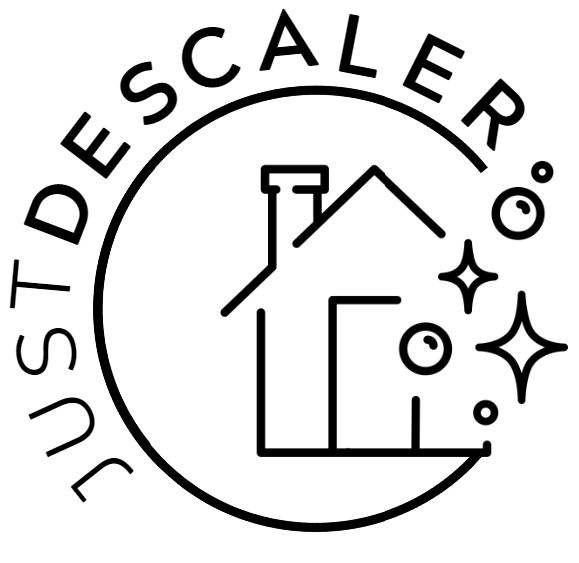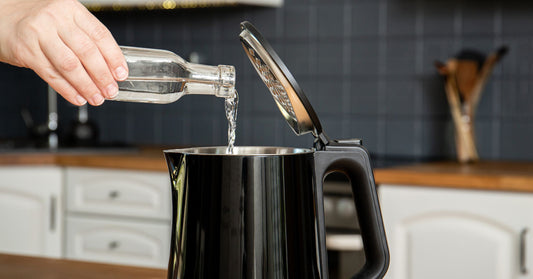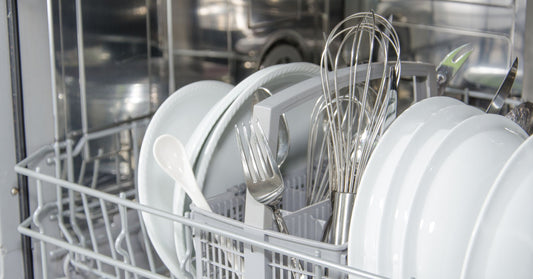Your morning routine wouldn't be complete without that perfect cup of coffee from your trusty coffee maker. But did you know that over time, mineral deposits can build up inside your machine, affecting the quality of your brew? This is where descaling comes into play. In this blog, we'll explore the top signs that indicate it's time to descale your coffee machine and guide you on how to do it properly.
For tips and tricks on how to properly descale your coffee machine, check out our previous blog on How To Clean And Descale Your Coffee Maker For Better Tasting Coffee.

Why Descaling Matters
Before we dive into the signs, let's quickly understand why descaling is essential.
Your coffee maker uses water to brew your coffee, and most tap water contains minerals like calcium and magnesium. Over time, these minerals can accumulate in the inner workings of your coffee maker, forming scale deposits, also known as limescale. This can lead to a range of problems, including:
- Reduced Efficiency: Scale deposits can clog up pipes and heating elements, making your coffee maker less efficient and causing it to take longer to brew your coffee.
- Taste and Aroma: The build-up of minerals can alter the taste and aroma of your coffee, giving it a bitter or metallic flavour.
- Shortened Lifespan: Neglecting to descale can shorten the lifespan of your coffee maker, as it must work harder to function properly. As it works harder, it uses more power, making it less energy efficient – and increasing your energy bills too.

What Should You Look For
Now that we understand why descaling is crucial, let's move on to the signs that indicate it's time to act:
- Slow Brewing Time: If your coffee maker is suddenly taking longer to brew your coffee, it's a clear sign that mineral deposits are obstructing the water flow. This can affect the temperature and quality of your brew.
- Decreased Coffee Temperature: If your coffee no longer comes out as hot as it used to, limescale build-up could be insulating the heating element, making it less effective.
- Unpleasant Taste: A noticeable change in the taste of your coffee, such as bitterness or an off flavour, is a strong indicator that it's time to descale.
- Reduced Water Flow: If water dribbles out of your coffee maker instead of flowing steadily, mineral deposits may be restricting the water channels.
- Noisy Operation: Unusual noises, like gurgling or hissing, can suggest that scale has built up and is interfering with the brewing process.

How to Properly Descale Your Coffee Maker
Now that you've identified the signs, it's time to tackle the descaling process. Here's a step-by-step guide to help you do it properly:
What You'll Need:
- Descaling solution (or a homemade mixture)
- Clean water
- A clean cloth or sponge
Steps
Prepare the Solution: Mix your chosen descaling solution as per the manufacturer's instructions or create your own homemade mixture. Check out our previous blog, Can I Make My Own Descaler?, for some ideas on natural solutions to tackling limescale.
Empty and Rinse: Empty any remaining coffee or water from the coffee maker's reservoir and remove the coffee filter and grounds.
Run the Solution: Pour the descaling solution into the reservoir and start a brewing cycle without coffee grounds. This will allow the solution to circulate through the coffee maker.
Rinse: After the cycle is complete, repeat the process with clean water to thoroughly rinse the coffee maker.
Clean Exterior: Wipe down the exterior of the coffee maker with a clean cloth or sponge.
Brew a Test Pot: Finally, brew a test pot of coffee with just water to ensure all traces of the descaling solution or vinegar have been removed.
Conclusion
Regular descaling is essential to keep your coffee maker functioning optimally and to enjoy the best-tasting coffee possible. By being attentive to the signs of scale build-up and following the proper descaling procedure, you can extend the life of your coffee maker and continue to savour your morning brew.




